Discover the use of a guide and the way to create it.
A guide is an interactive decision tree that allows you to break down complicated procedures into several steps to reach a response or an operating mode.
The display of procedures depends on the choices made in the previous step.
The ergonomics allow the administrator to create content that the advisor will browse.
A guide is materialized by a blue visual: 
The "guide" format is distinguished from the "article" format, a simple format that allows you to focus precisely on a theme, a specific operating mode or a professional gesture → 🟨 Create an article
🎯 Use cases
Break down your long and complex procedures into different steps and alternatives.
Allow your advisors to only be aware of the procedure elements associated with the client case to be processed.
⚒ Create a guide
A guide can only be created within a collection → see the article 📁 Create a collection
There isno limit to the number of guides that can be created within a simple or nested structure collection.
To create a guide, follow these steps:
Select the collection in which to integrate your guide;
Click on "
Add an element";Choose "
Guide";Give a name to your guide;
Your guide has just been created.
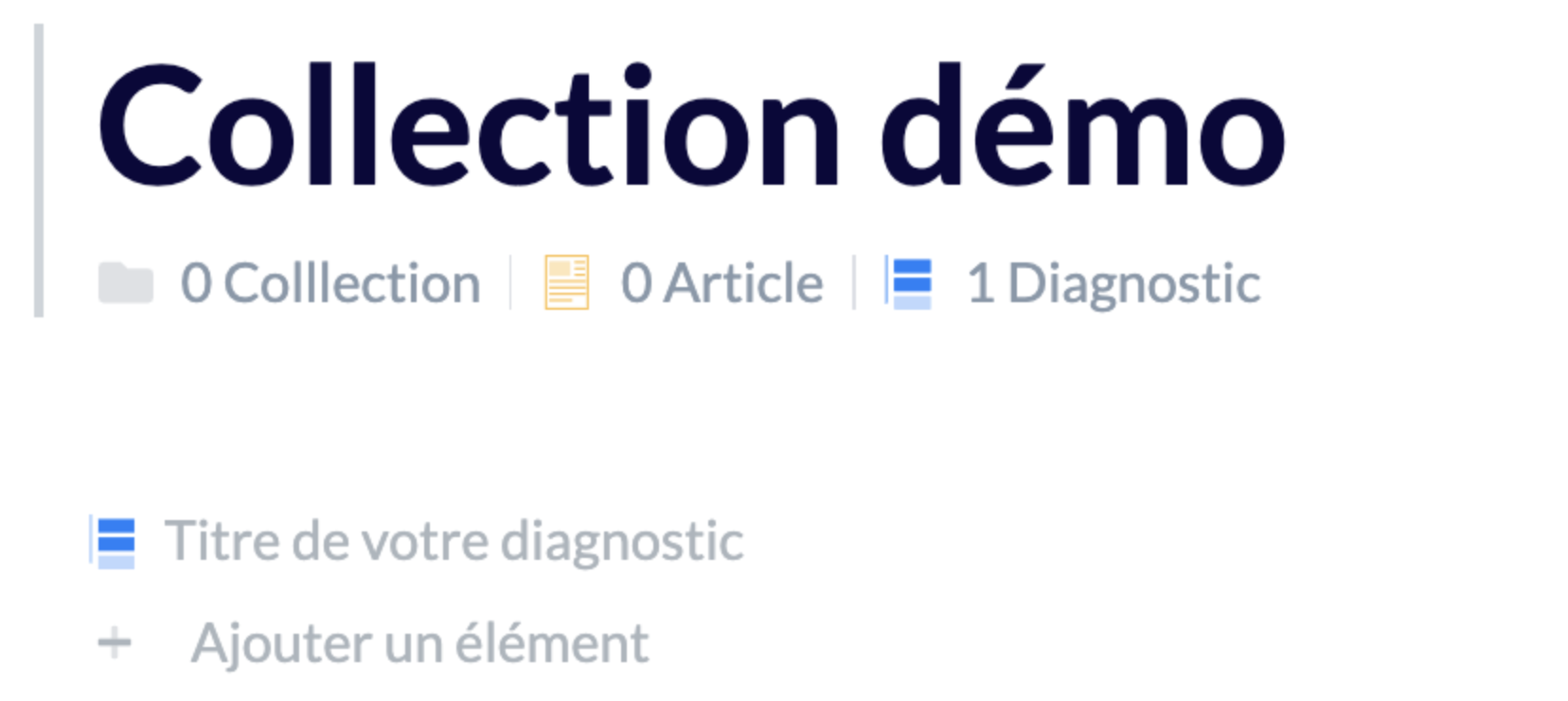
You can open it to start editing the content:
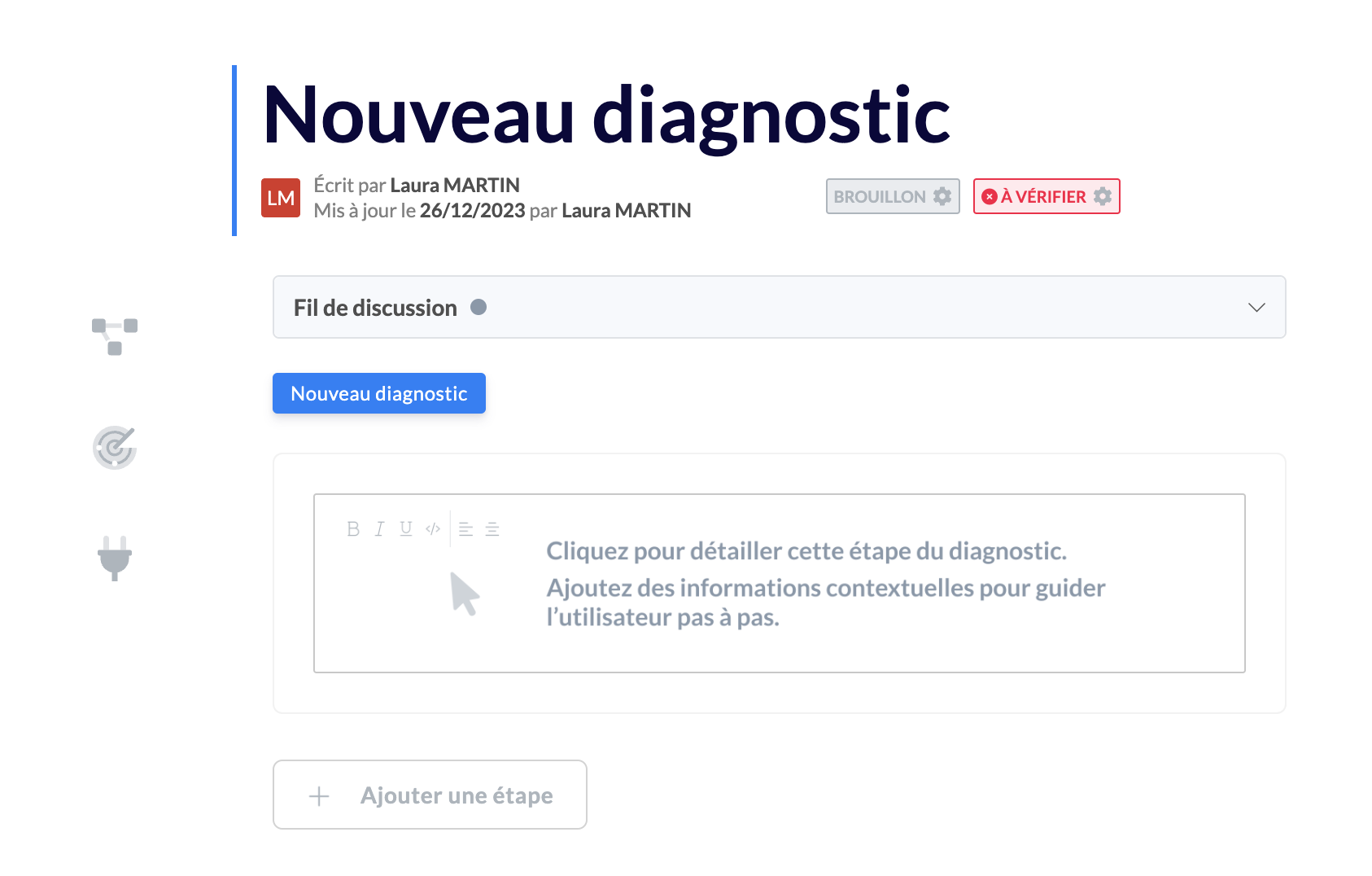
At its creation, the guide is automatically labeled as “Draft” and "To be verified" → see the articles ✅ Publish a content and 👁️ Verify a content
A content with the "Draft" label will not be visible to advisors.
⚒ Create a step (branch)
There is no limit to the number of steps that a guide can contain.
To create a step, follow these steps:
Click on "
Add a step";Give a short and explicit name to your step;
Click on the step to edit the related content.

You can perform several actions on a step, using the icons that appear on the right of the button:
Edit the name of a step using the “🖊“ icon;
Move a step to another location within the same guide or within another guide. To do this, simply click on the second arrow to the right of the step button.
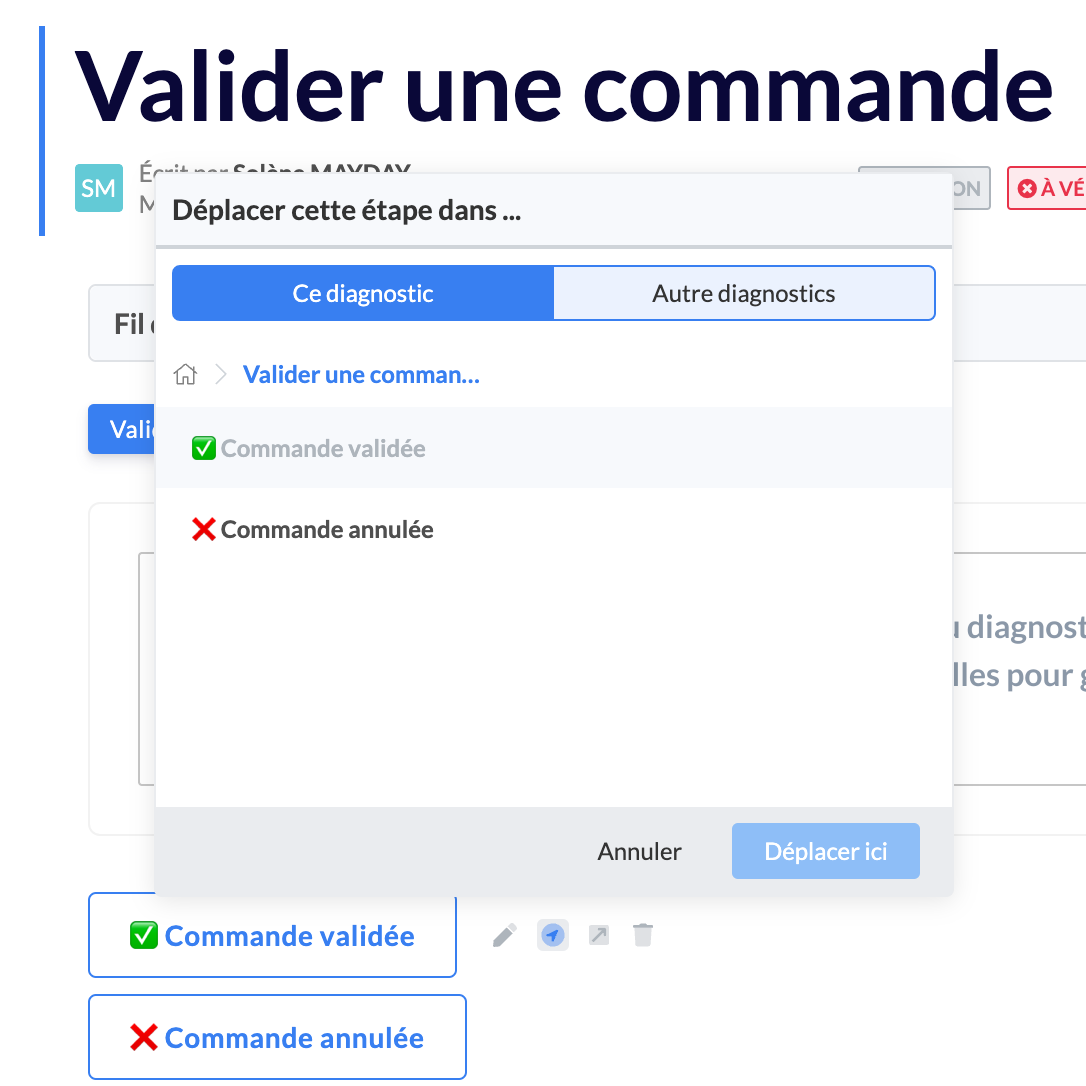
Create a redirection within a step to another content, by copying and pasting the URL of the content to which you want to redirect the advisor. Thus, when the advisor clicks on the step, he will leave the guide and be redirected to another content in the knowledge base that will allow him to continue his journey and provide an answer to the client.

Delete the step, by clicking on the “🗑“ icon.
✨ Information and features of a guide
Guide contributors
Under the title of the guide, you have access to the name of the content creator, as well as the date of the last update. By clicking on this information, a modal will appear on the right to give you access to:
the name of the author and the date of creation of the content;
the history of updates (date of update and name of the editor);
the total number of contributors on the content.
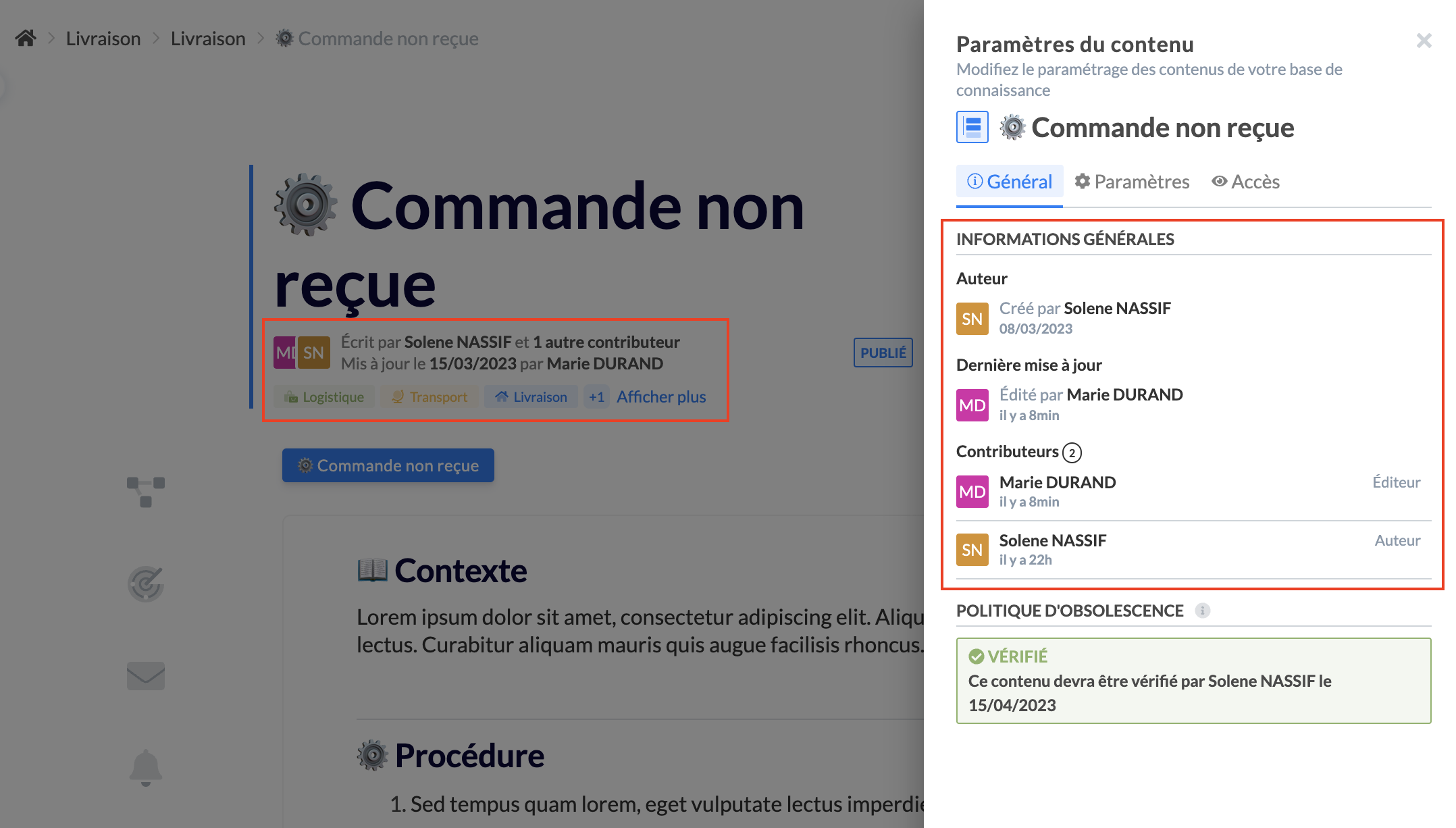
Guide status and features
When creating your guide, it is in "Draft" mode. You can see icons on the left of the guide title.

If you click on "Draft" to change its status to "Published", you will see new icons. Each icon has a specificity that allows you to feed the content to increase its performance in the interest of advisors.
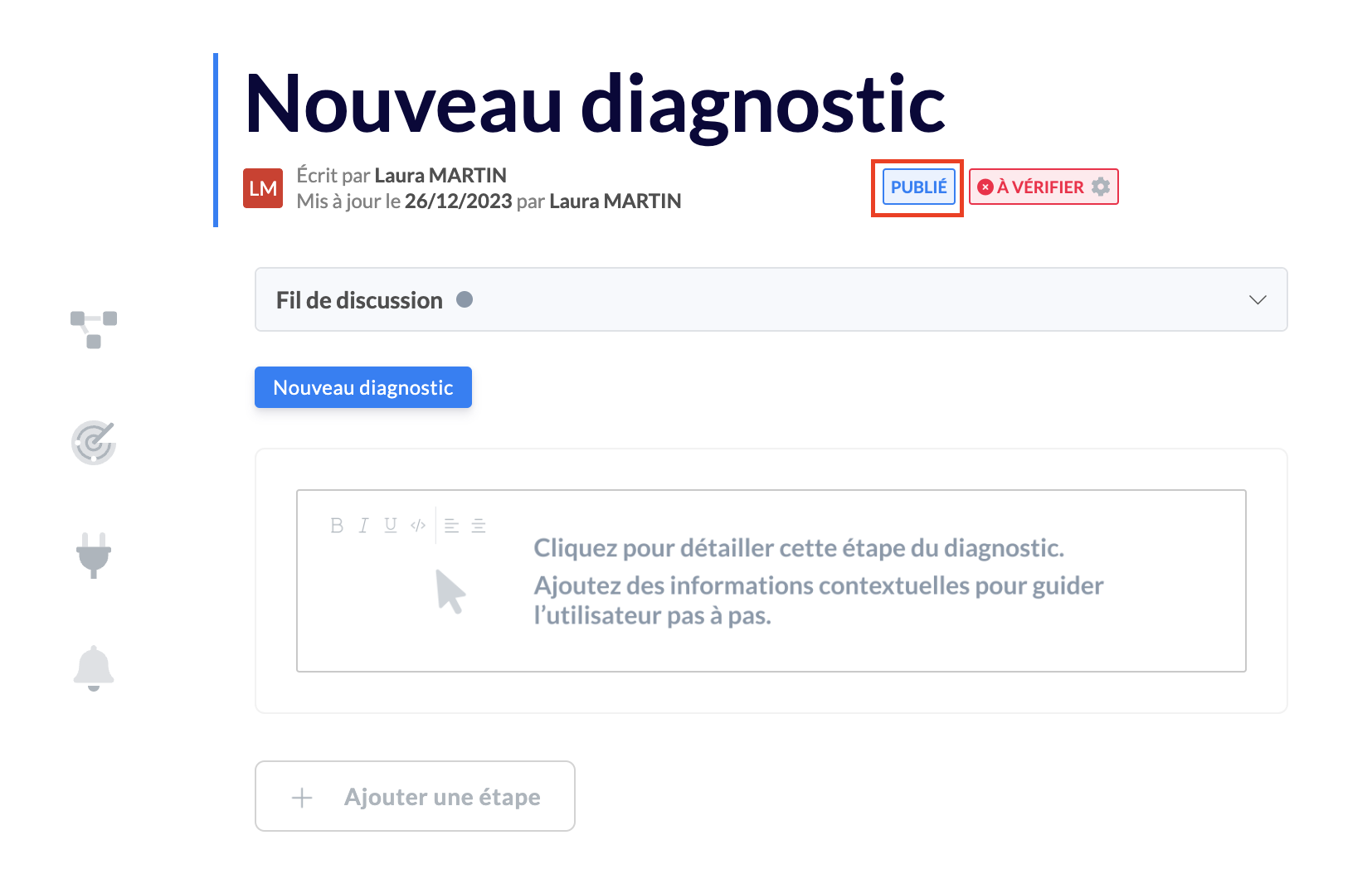
A published guide will be visible to advisors with access rights to this content.
📝 List of features

This feature allows you to:
Display the steps and sub-steps;
Preview the content of the step;
Access the desired step in one click;
Navigate and view the decision tree through a zoom and the mini-map to know where you are in the process;
Move the steps/sub-steps to another branch of this same guide (via the "Editable" menu).
🎬 You can watch
this video to discover the features of the flowchart.

Agents also have these same rights on the Mayday Web interface, with the exception of step movement, which is a feature reserved for administrators.

An alias is a keyword that will be attached to your content.
This keyword must be a synonym of a term related to your content.
These aliases will not be visible in the content itself.
If this keyword is used by an agent in the search bar, your content will be proposed to him.
Several aliases can be entered for the same guide.
Each keyword can be integrated into a strategic step of the guide, provided that the step is qualified as a "key step" (see the section below "Add as key step icon").
Example: guide "Perform a refund":
At the main step: "rmbt" or "refund";
At the "Total Refund" sub-step: aliases "integral", "global", "totality";
At the "Partial Refund" sub-step: alias "limited".

Integrate your suggested responses at each step of the guide to guide the advisor on the response to provide to the client.
This response can be automated when you connect Mayday to software such as Zendesk, Intercom, Salesforce, etc.

You can notify your advisors in one go to alert them of a change or urgency → 🔔 Send a notification to the users
By creating a rule at the desired step of your guide, you can automate the display of a process or response that will be integrated into your ticketing tool.
🤖 How to set up Mayday automations for Zendesk
🤖 How to set up Mayday automation rules for Salesforce
🤖 How to set up Mayday automations in Intercom

You can rename the title of your content at any time by clicking on the style icon to the right of the title. The modification will be instantly visible on the advisor side and within the content redirection links.

You can manage the settings of your content by adding labels, for example, or by checking if verification processes have been put in place.
💡 Find more information here: MISSING CONTENT
💡 Additional features
Once your guide is created, on the content page, you can perform several actions by clicking on the three dots “…” present at the top right of the page:
Open content settings;
Copy content URL;
View content version history;
Create a template from this content to reuse its structure;
Archive content (it will be possible to restore it later).
Permanently delete content.
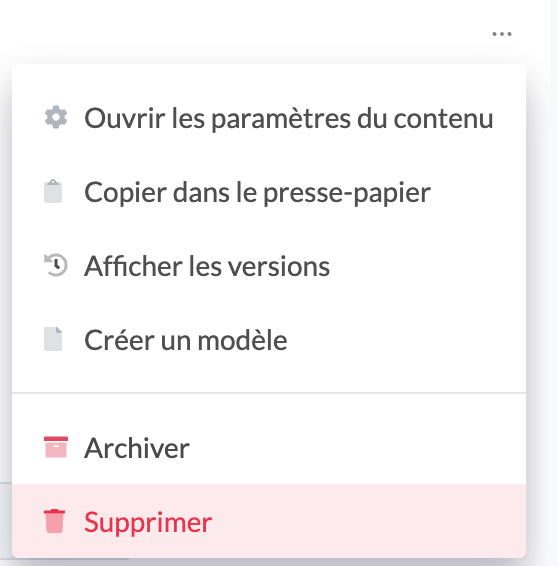
It is also possible to clone the content within the same knowledge base or another knowledge base.
To do this, follow these steps:
Go to the collection page containing the content;
Click on the three dots "
..." on the right of the content;📸 View page 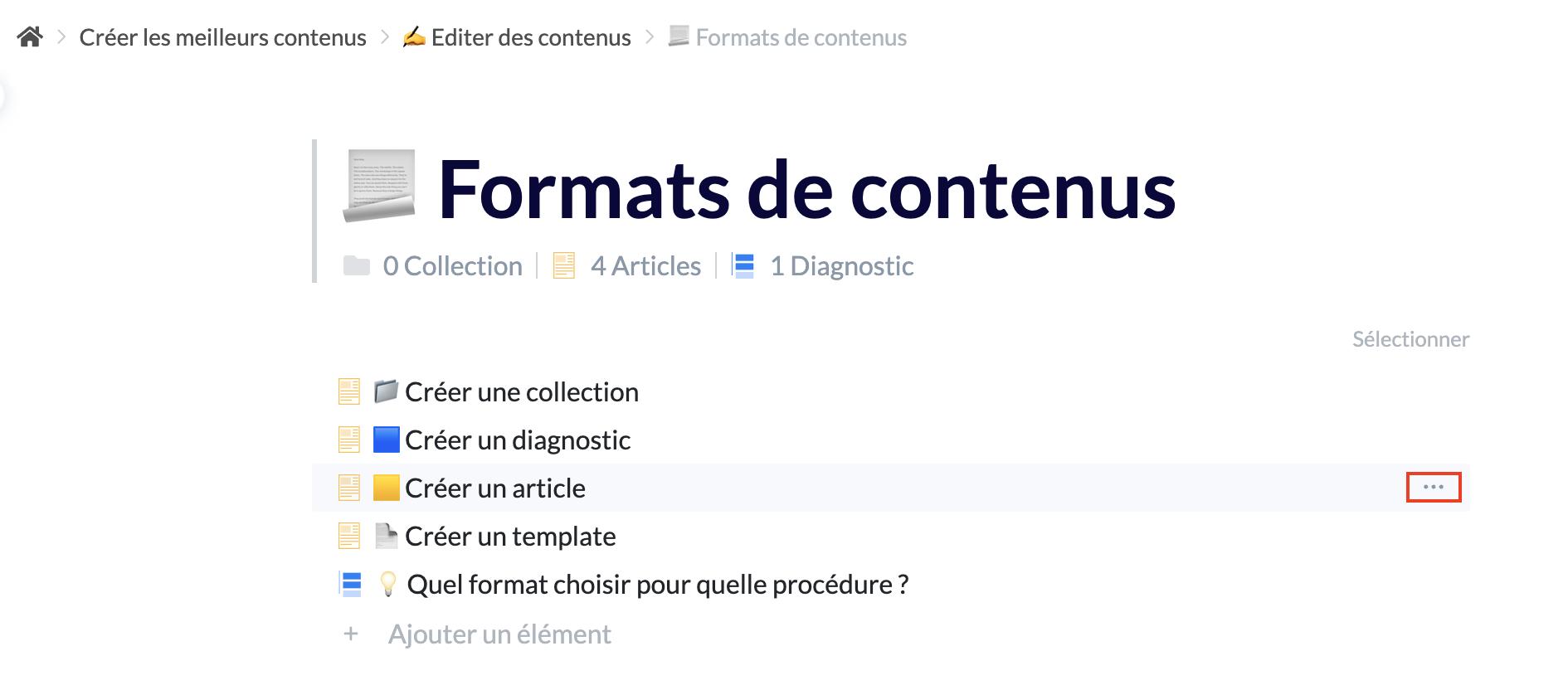
Select the knowledge base and then the collection/sub-collection where you want to insert the cloned content.
Click on "
Select" and then on "Validate".